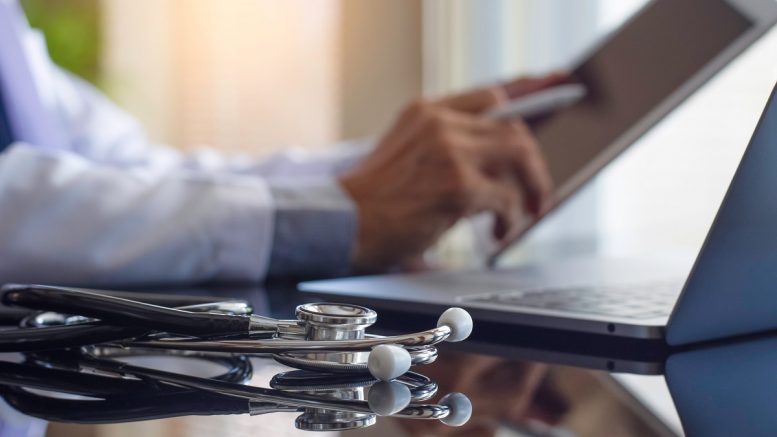Remote patient monitoring with telehealth is revolutionising health care by allowing doctors to track vital signs and other health metrics in real time, right from the comfort of the patient’s home. This technology is gaining popularity, primarily due to its crucial role in managing chronic conditions and facilitating care during the COVID-19 pandemic.
However, cybersecurity has become a critical concern as these systems become more widespread. Ensuring the security of these devices is vital to protect sensitive patient data, and maintain trust between medical providers and patients. Failure to do so could lead to unauthorized access, data breaches and other serious risks.
The Need for Remote Patient Monitoring
Remote patient monitoring systems offer incredible benefits that reshape the health care industry. By reducing the need for in-person visits, these systems can significantly reduce costs for providers and patients. They also allow doctors to make timely and accurate medical decisions, enhancing patient comfort by letting people receive quality care without leaving their homes.
The COVID-19 pandemic further accelerated the adoption of these systems. Social distancing measures and overloaded medical facilities made remote monitoring a practical solution for ongoing care. In 2021, over a third of U.S. adults used a telehealth monitoring system. This technology has proved invaluable in tracking symptoms, administering treatment plans and reducing the strain on health care systems.
The Cybersecurity Risks
As technological innovations become more integral to the industry, it’s crucial to recognize the cybersecurity risks of this shift. These vulnerabilities can compromise sensitive patient data and impact the effectiveness of medical treatments.
Unauthorized Access
One of the most pressing cybersecurity risks is the threat of unauthorized users gaining access to sensitive patient data. When institutions do not adequately protect this data, it becomes a target for hackers looking to exploit vulnerabilities for financial gain or malicious intent.
Such unauthorized access can result in the leaking of personal information, medical records and financial data. It violates privacy laws and severely undermines patient trust in infrastructure systems. Thus, securing against unauthorized access is a top priority for health care IT professionals.
Data Interception
Another critical cybersecurity risk is the danger of cybercriminals intercepting data during transmission between the patient’s device and the provider’s system. Data interception occurs when an unauthorized entity taps into the data stream.
Hackers can collect sensitive material, modify it or inject malicious software. Doing so jeopardizes the integrity of medical information, and could lead to incorrect diagnoses or treatments in worst-case scenarios. Preventing interception is essential for ensuring patient safety and data integrity.
Software Vulnerabilities
Using out-of-date or unpatched systems presents another substantial risk in remote patient monitoring with telehealth. Older software versions often contain vulnerabilities hackers can exploit to gain access or execute malicious activities.
Failing to update or patch telehealth monitoring systems can make it easier for attackers to compromise the entire health care network. Thus, keeping all software up to date is instrumental in mitigating risks and ensuring the highest level of security for sensitive patient data.
Legal Implications
Navigating remote patient monitoring systems’ cybersecurity landscape involves technical challenges and legal implications. Failure to secure these systems adequately can result in violations of privacy laws, hefty fines and lawsuits from affected patients.
HIPAA Compliance
Cybersecurity lapses in remote patient monitoring systems can directly lead to privacy law violations, such as the Health Insurance Portability and Accountability Act (HIPAA) in the U.S. When unauthorized users gain access to or intercept patient information, it constitutes a breach of these laws.
Such violations expose health care providers to regulatory scrutiny and financial penalties. Adherence to privacy laws is paramount to maintaining patient trust and avoiding costly legal repercussions.
Legal Penalties
Potential fines for cybersecurity breaches in the medical industry can be staggering, sometimes reaching millions. Regulatory bodies like the Department of Health and Human Services can impose these fines based on the severity and duration of the violation.
Besides monetary penalties, medical providers may also face legal repercussions such as mandatory audits or corrective action plans. In extreme cases, criminal charges could be filed, tarnishing the reputation of the health care facility and its staff. Given these severe consequences, addressing cybersecurity risks is an IT and legal imperative.
Patient Lawsuits
In addition to regulatory fines and penalties, medical providers also face the risk of legal actions from patients affected by a data breach. Individuals can sue for damages — such as emotional distress or financial loss — if third parties expose or misuse their sensitive data.
These lawsuits can be financially draining and reputation damaging for medical institutions. Moreover, a high-profile legal battle could result in lost trust among current and potential patients, impacting the provider’s bottom line for years. Thus, safeguarding against breaches is crucial for compliance and maintaining patient trust and institutional integrity.
Tips for Health Care IT Professionals
Cybersecurity risks and legal implications seem daunting. However, there are proactive steps IT professionals can take to secure remote patient monitoring systems.
Multi-Factor Authentication
One highly effective way to bolster security is through multiple layers of authentication, often called multi-factor authentication (MFA). It requires two or more verification steps before granting access to sensitive information. Implementing it could help you avoid becoming one of the over 3,000 cybersecurity complaints the FBI receives daily.
Typically, it could be something the user knows — like a password — combined with something the user has, like a mobile device for a verification code. By implementing MFA, health care IT professionals can add an extra layer of defense, making it more challenging for unauthorized users to gain access to secure information.
Regular Updates
Keeping all software up to date is paramount in securing remote patient monitoring systems. Outdated software often contains vulnerabilities cybercriminals can exploit to gain unauthorized access.
By regularly updating or patching the telehealth monitoring system, health care IT professionals can close these security gaps and protect against potential breaches. Staying current with software updates is fundamental to maintaining a secure and reliable medical system.
Employee Training
Regular cybersecurity training for staff is essential for creating a secure environment. Human error is often a weak link in cybersecurity, so educating workers on best practices can drastically reduce the risk of breach.
Training should cover topics like recognizing phishing attempts, safe internet usage and adequately handling sensitive data. By making cybersecurity training a regular part of employee development, health care IT professionals can cultivate a culture of vigilance and preparedness.
Securing the Future of Remote Patient Monitoring in Telehealth
As the health care industry continues to embrace digital transformation, the integrity and confidentiality of patient data must be a top priority. Failing to secure telehealth monitoring systems puts sensitive information and the reputations of fundamental institutions at risk.
Medical organizations must prioritize cybersecurity. They can protect patients and providers by staying vigilant, adopting solid security measures, and fostering a culture of awareness.
By Zac Amos, rehack.com





